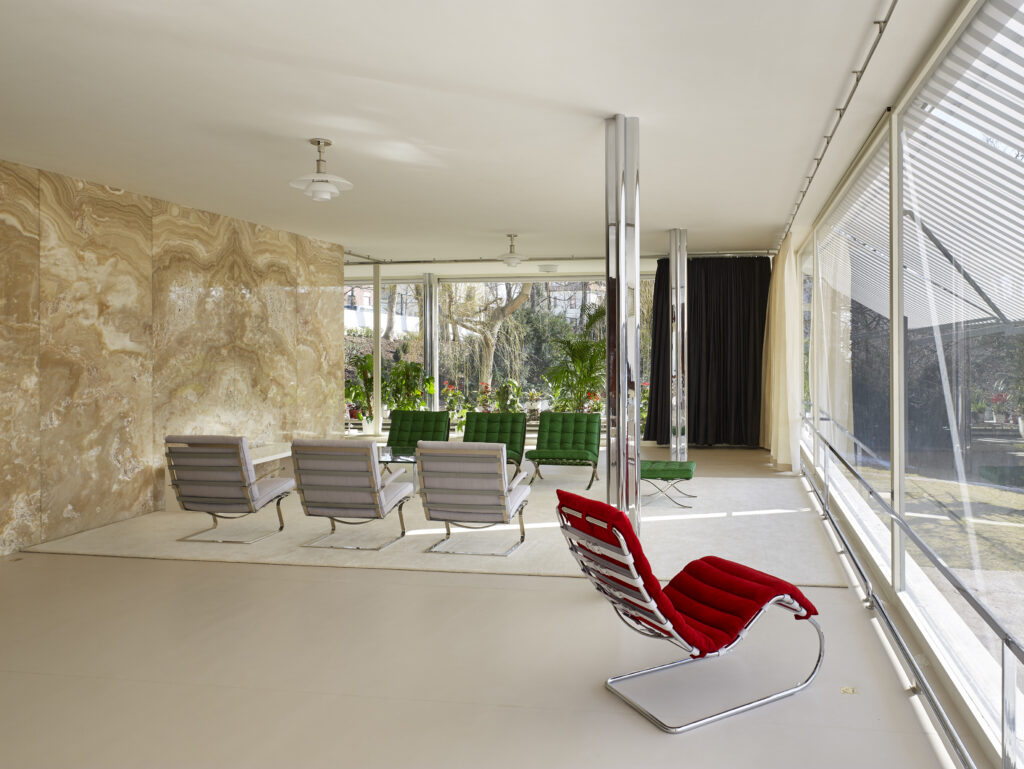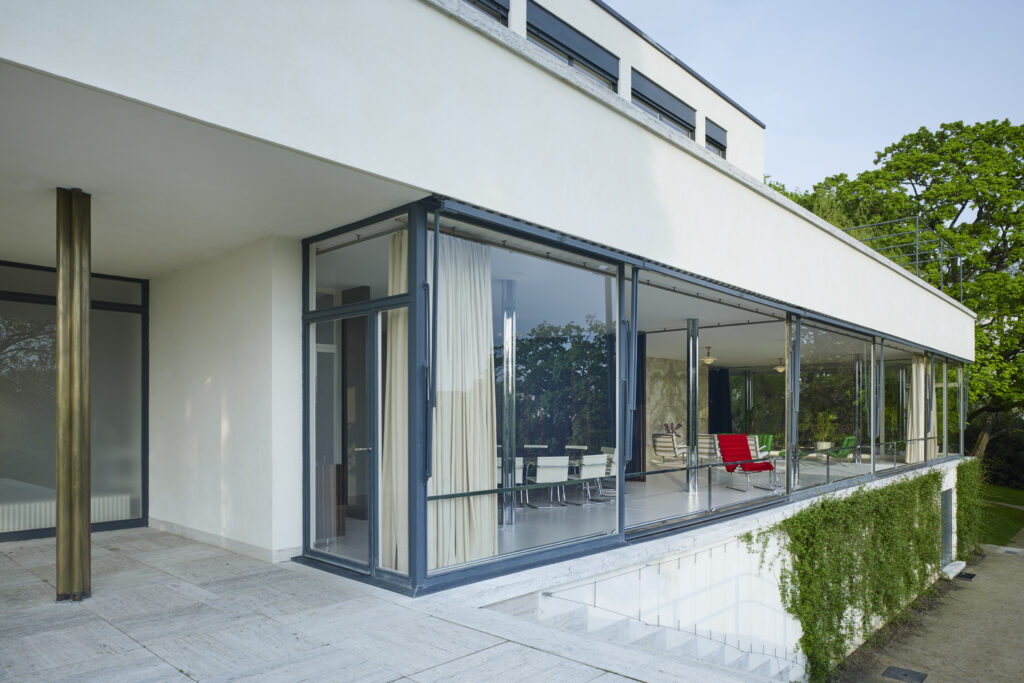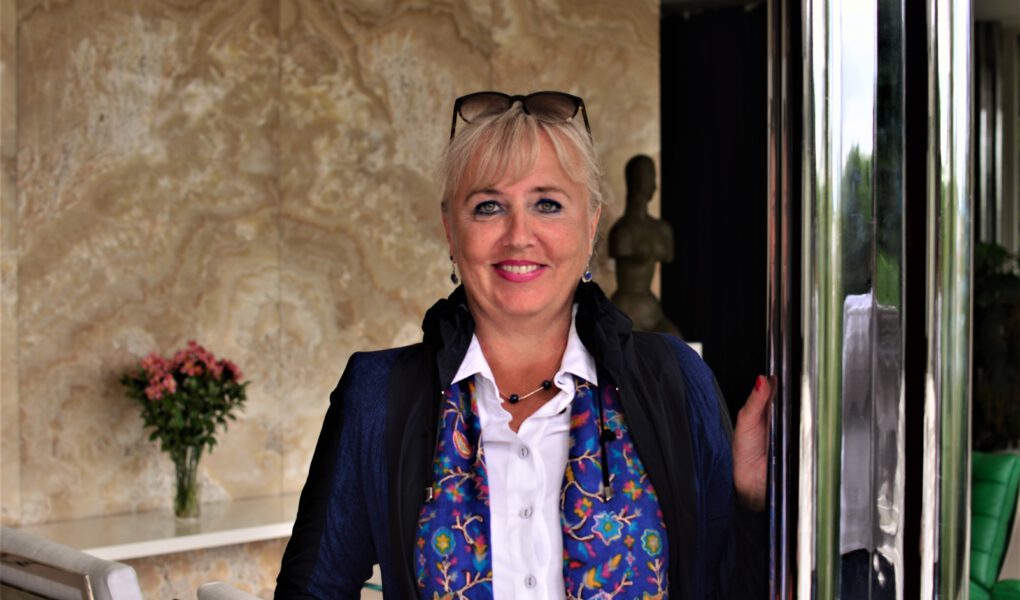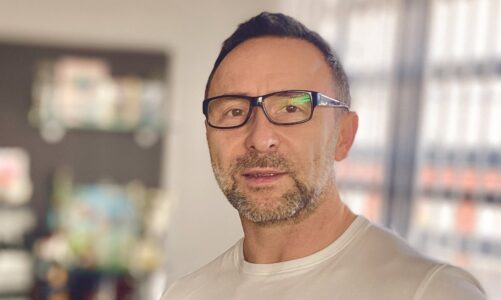Iveta Černá studied architecture because, from an early age, she had been drawn to history and artistic creation, which shaped her for the history of architecture. For this reason, the protection of monuments has become her lifelong mission, not only in her work for the National Heritage Institute in Brno but subsequently also in the position of the director of Villa Tugendhat. She is a recipient of the Brno City Award and a member of the organising committee of the Iconic Houses Foundation, which brings together iconic residential buildings of 20th century world architecture.
The rebirth of Villa Tugendhat isaff ected not only by the fate of the original owners but also by its creator’s modern view of architecture. What is the legacy of the villa for today’s art and architecture?
Mutual understanding between the client and the architect was one of the key factors influencing the final appearance of the building. Both Greta and Fritz Tugendhat shared common ideas for a modern, spacious house with clear and simple shapes. They were enchanted by the works of the then famous German avant-garde architect Mies van der Rohe in Berlin and Stuttgart, so they approached him. At that time, Mies had a unique opportunity to design a family home with almost no limits, use rare natural materials, and experiment with the dispositional, technical and artistic design of the space. For the first time in history when building a private house, the architect used a steel supporting structure in the form of 29 subtle columns on a cross shaped floor plan.

God is in the details. Could you pick up on any details from this building that influenced modern architecture?
Villa Tugendhat is a compact work. The architect and his collaborators designed not only the building itself but also the interior equipment and the garden. In layman’s terms, his ingenuity is even imprinted on the door handles and the shape of the supporting structure. Greta Tugendhat recalled Mies van der Rohe’s emphasis on the use of noble materials in a modern building without ornaments or decorations. Rare veneers from Southeast Asia, onyx from Morocco and Italian travertine are used in the interiors of the villa. An essential element of the entire building is the load-bearing steel skeleton, which, by the principle of free-flowing unbounded space, made it possible to open up the main residential unit to the garden by means of large-format lowering windows. Selected pieces of furniture, which Mies designed with German designer Lilly Reich, have become icons of world design, such as the Barcelona, Brno and Stuttgart armchairs.

The villa is not only a cultural centre of Brno and its surroundings but also has a worldwide reach. Thanks to the reconstruction from 2010 to 2012, it was reborn. Is the villa important only for connoisseurs of architecture, or is its legacy wider than that?
At the time of its construction, the reception of the Brno villa by Czech experts was not exactly positive. However, it did receive highly positive esponses abroad. In 1932, the house was presented alongside other world-renowned buildings at the Museum of Modern Art in New York. This act definitely confirmed the international fame of the villa. Now, 90 years after its construction, fame still resonates. It is not surprising that a large part of the visiting clientele consists of foreign people interested in the work of Mies van der Rohe, mainly from the USA, South America or neighbouring German-speaking countries. The first post-revolutionary Czech visitors were sometimes disappointed with the excessive austerity of the interiors. Contemporary visitors already possess knowledge of the history of the house and the fate of its builders in the context of modern architecture. This year, we will have several projects that will be aimed at acquainting the public with the possibilities of interpreting the space of the villa across artistic disciplines and shift the multicultural perception of this iconic building.
Thank you for the interview.
Text: redakce
Foto: David Židlický




